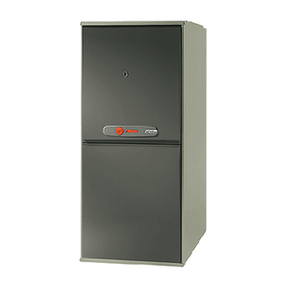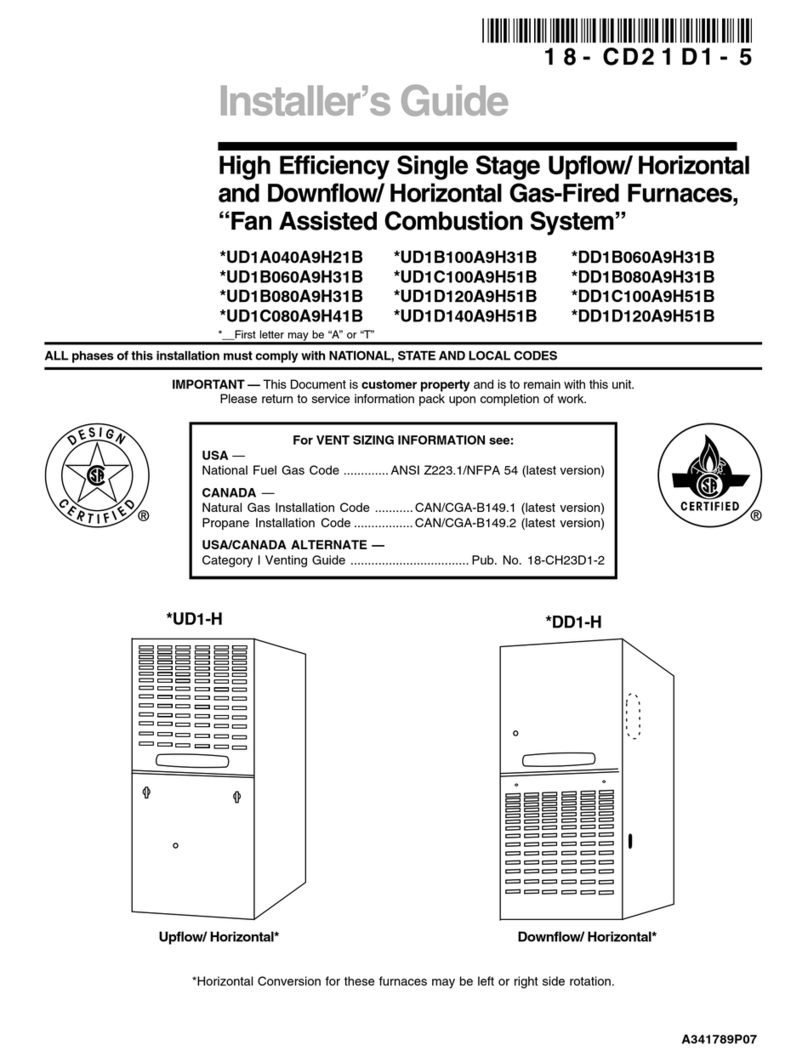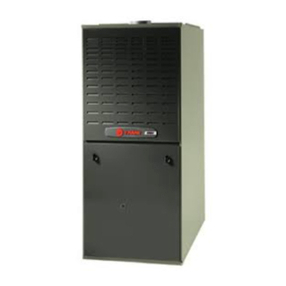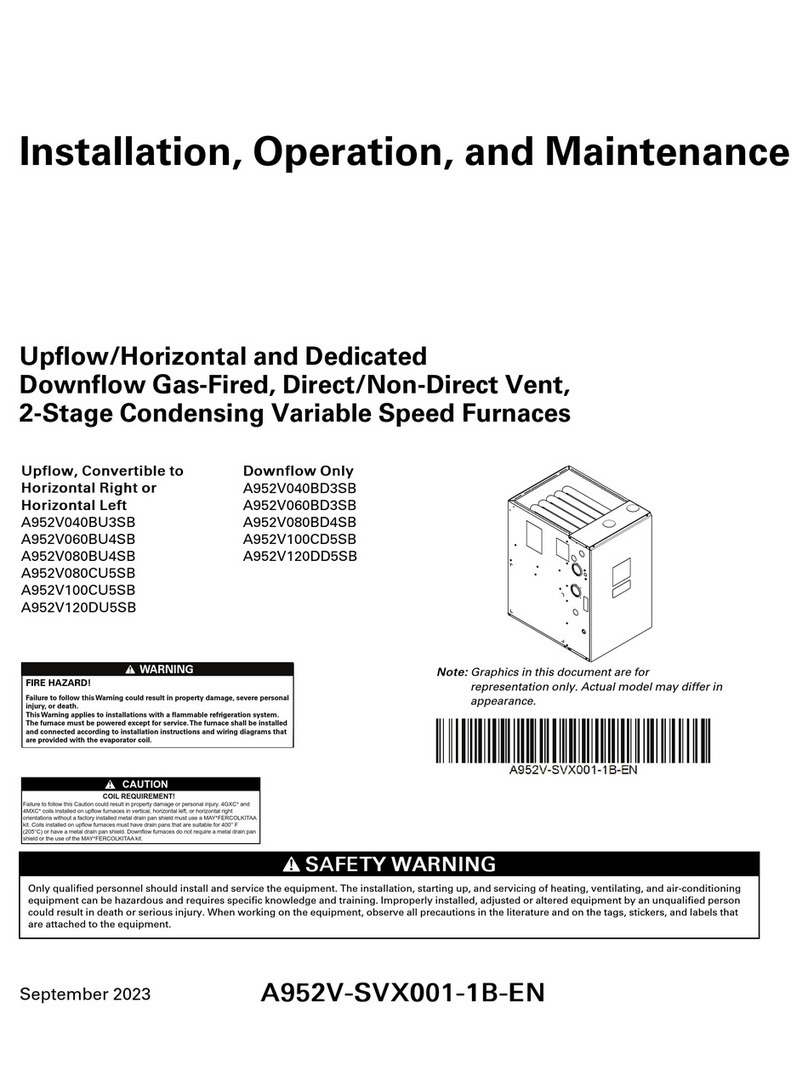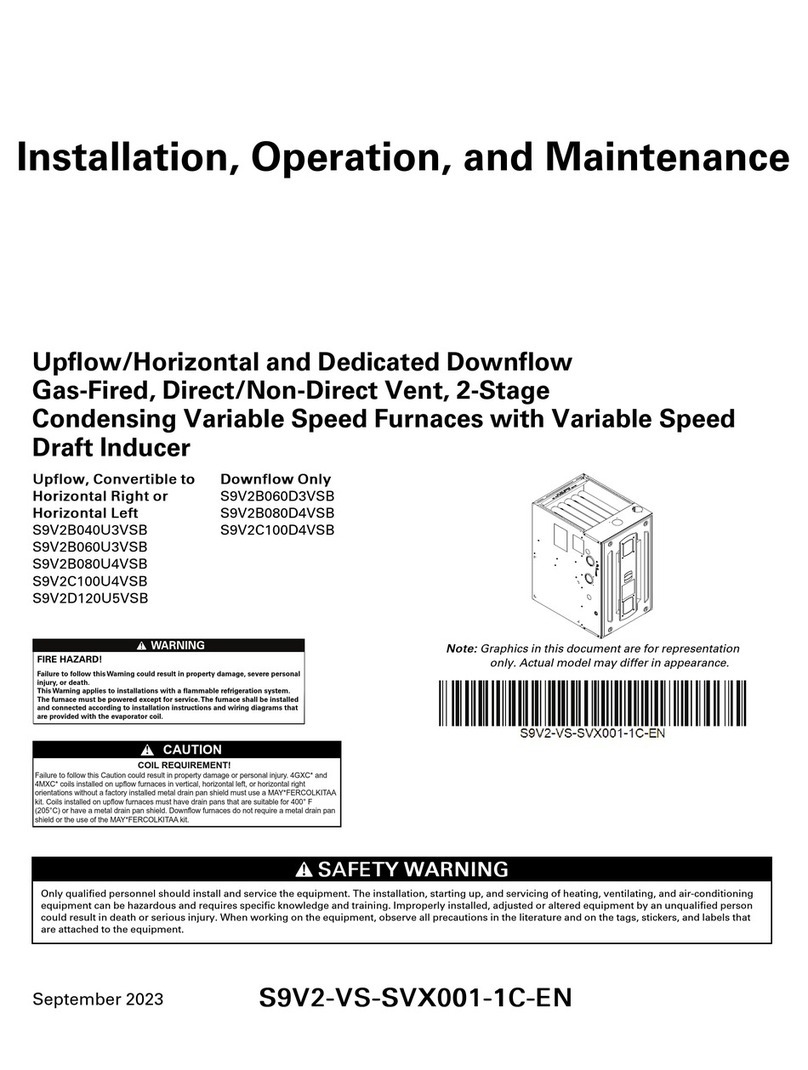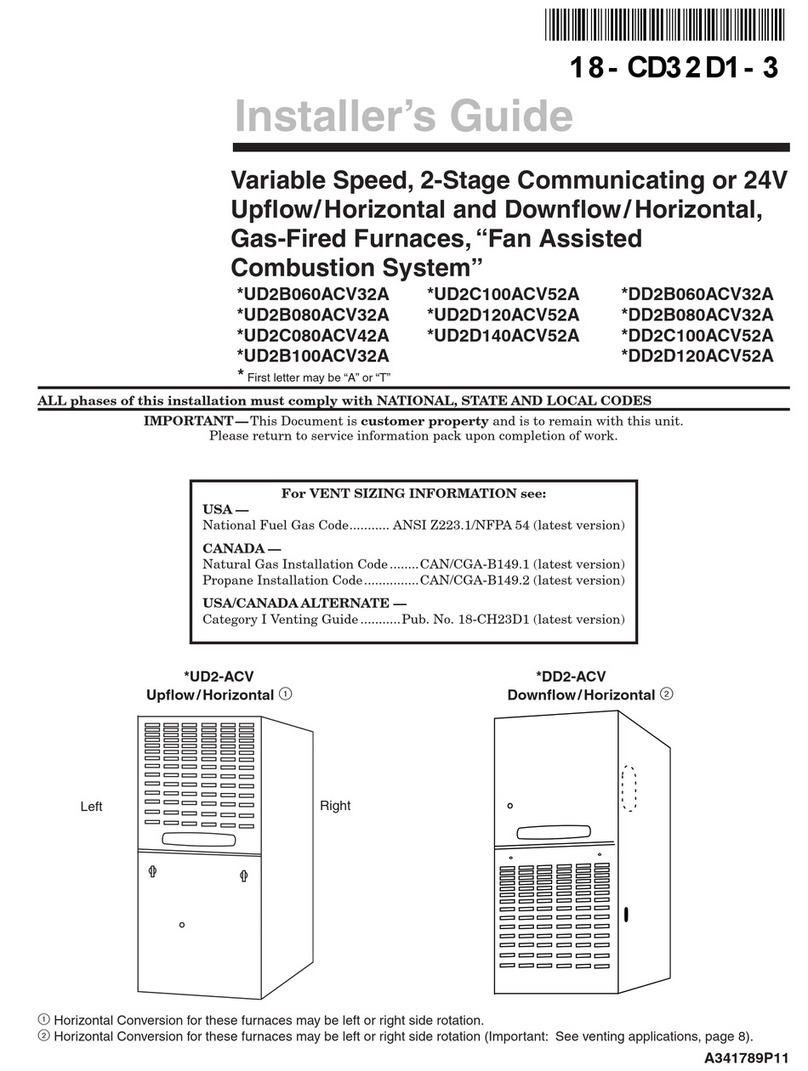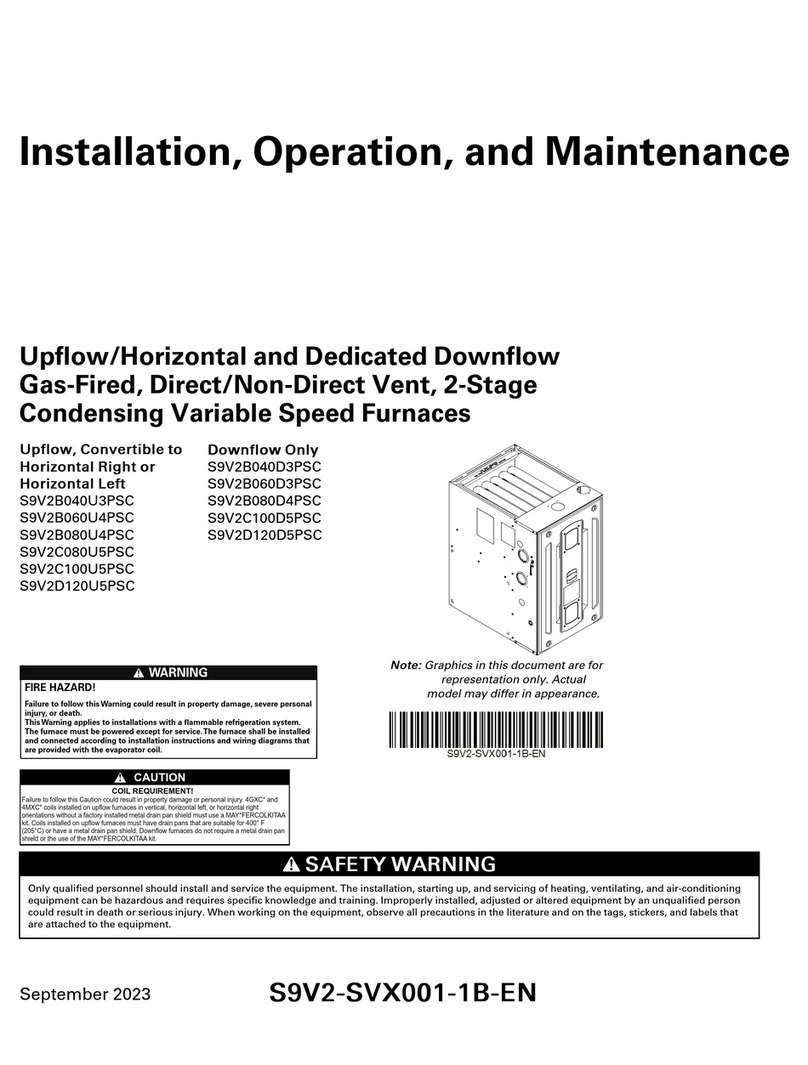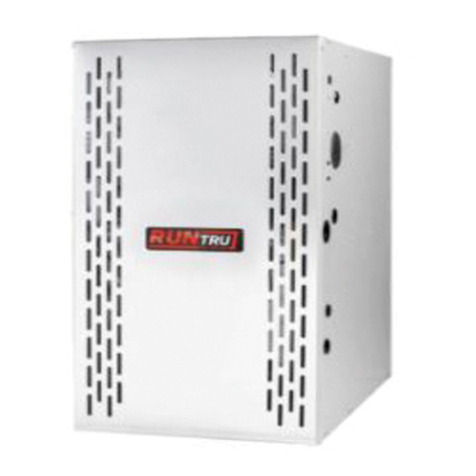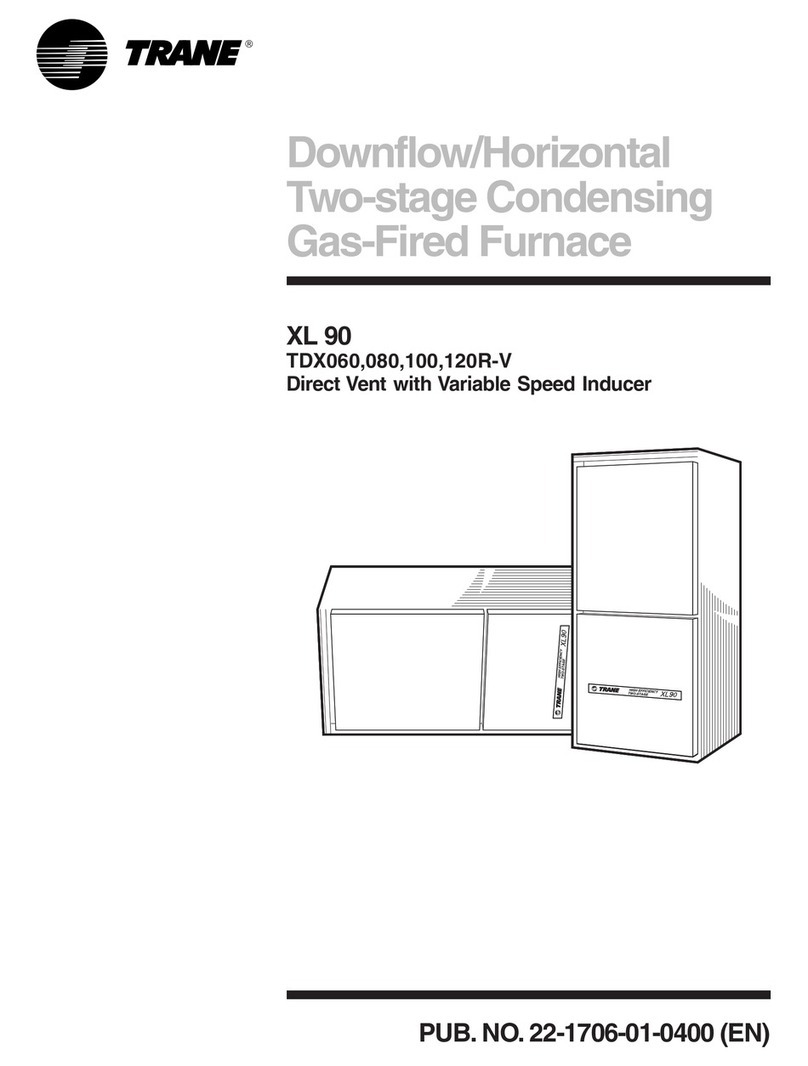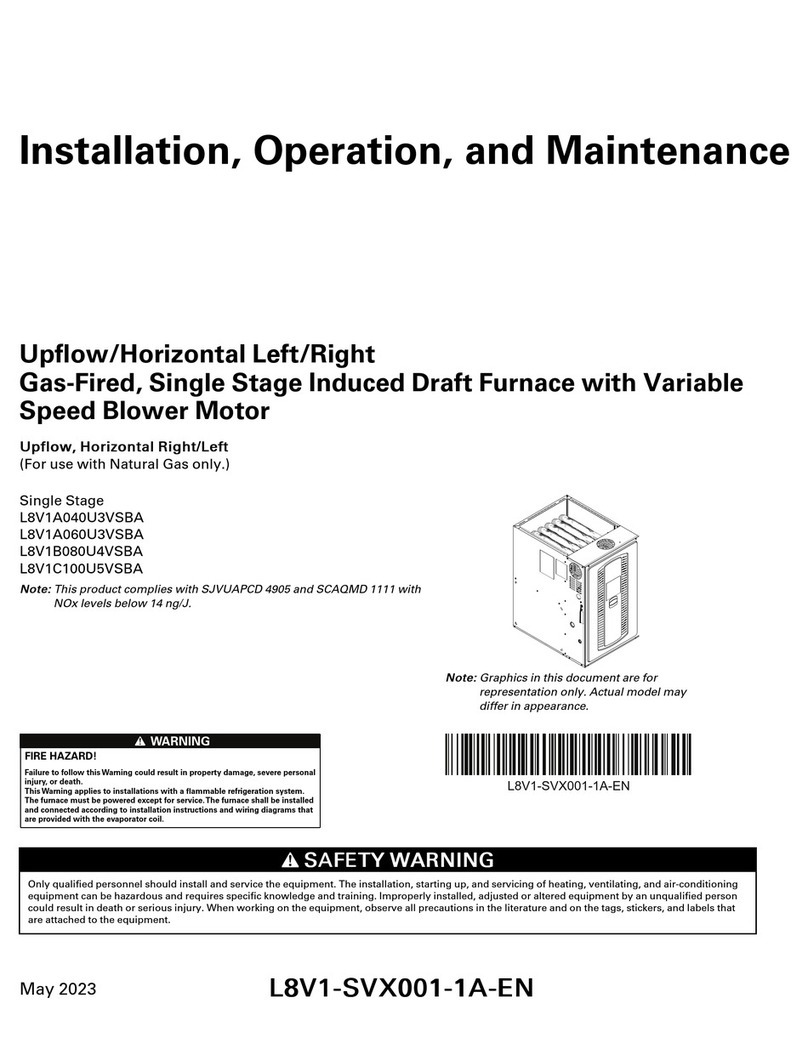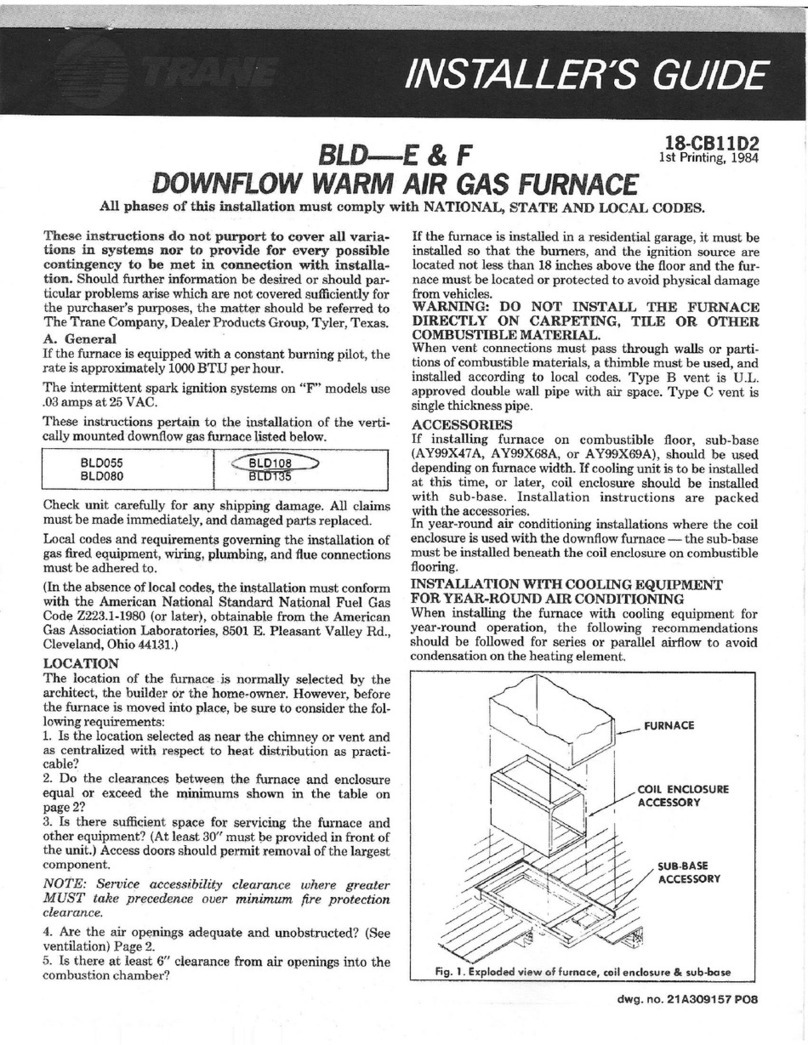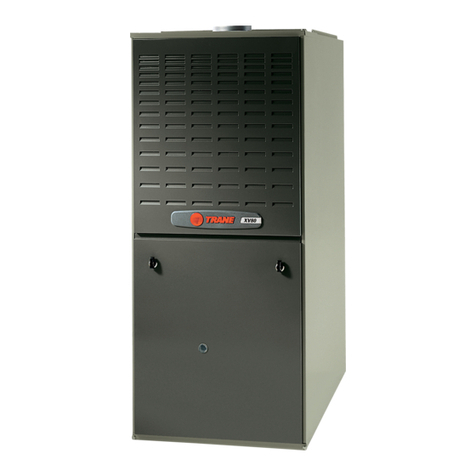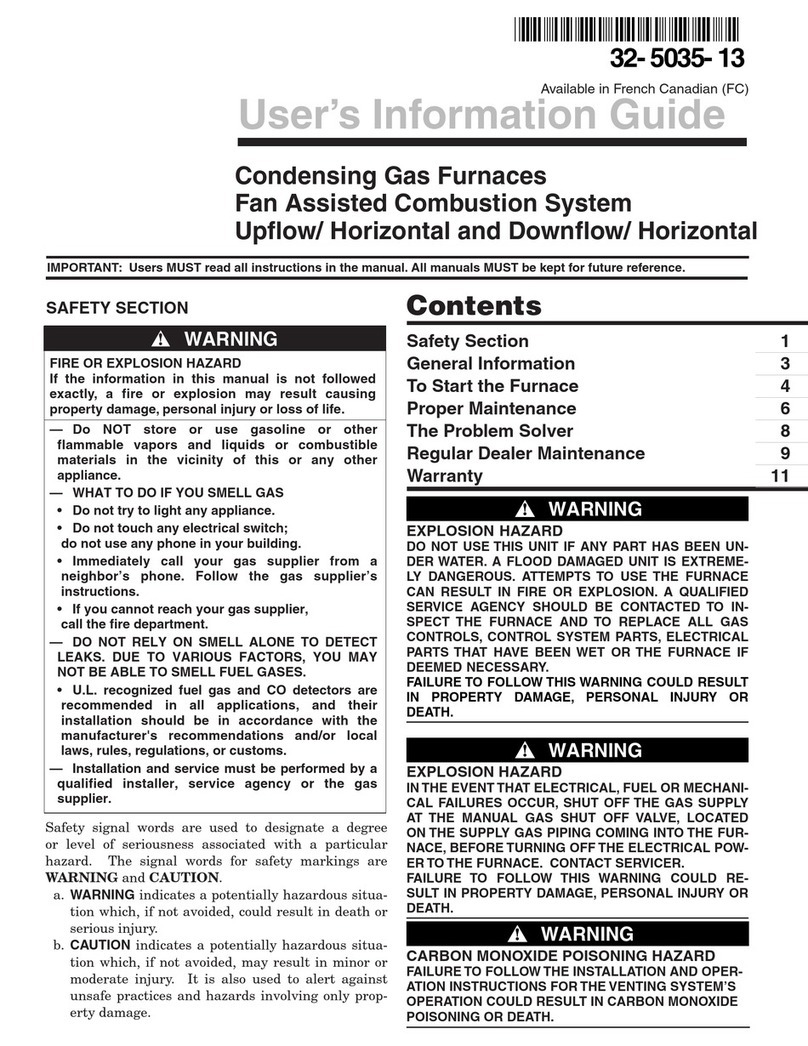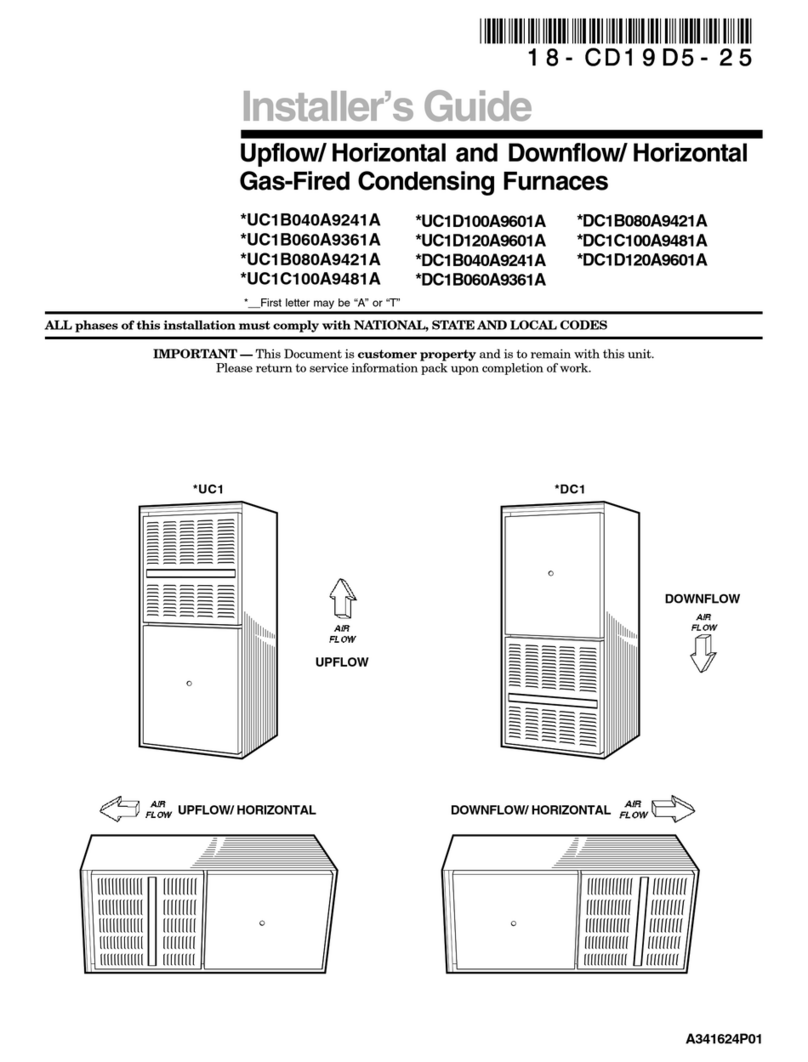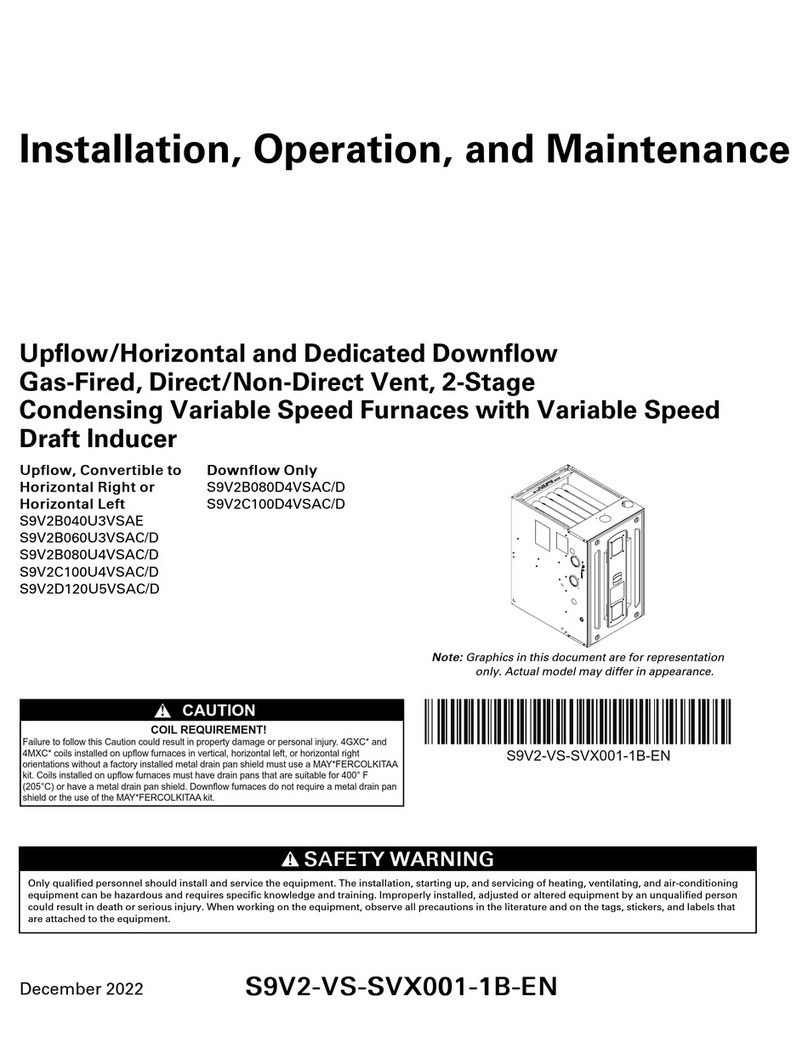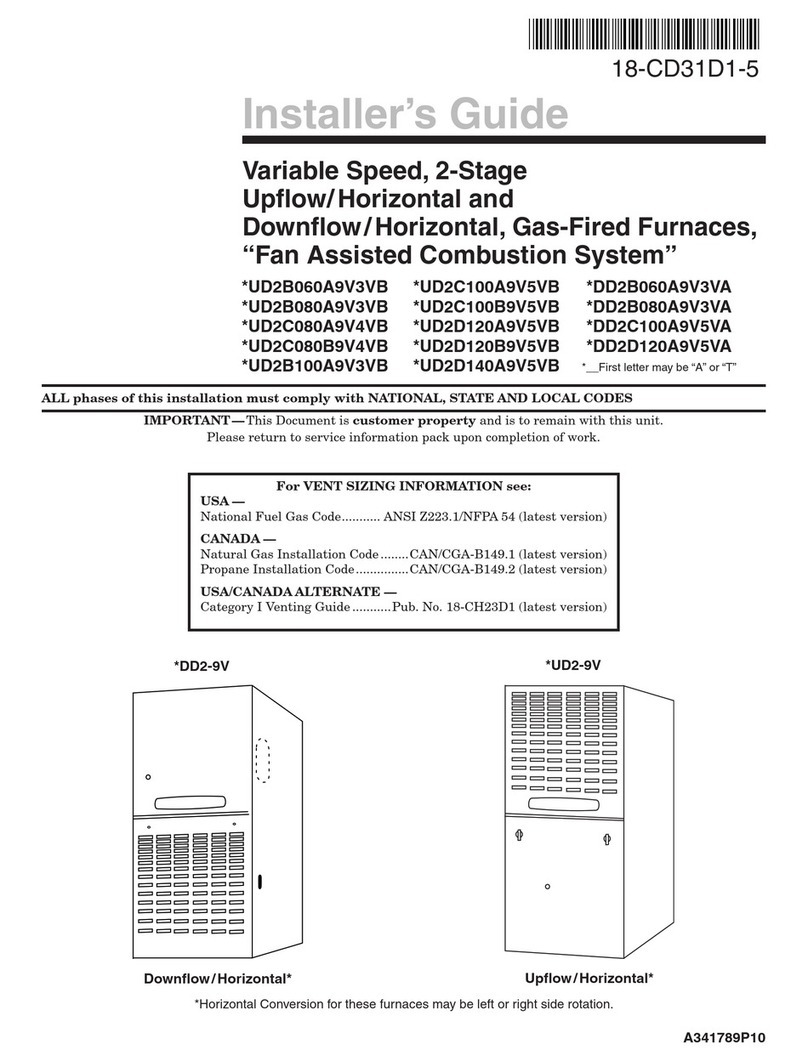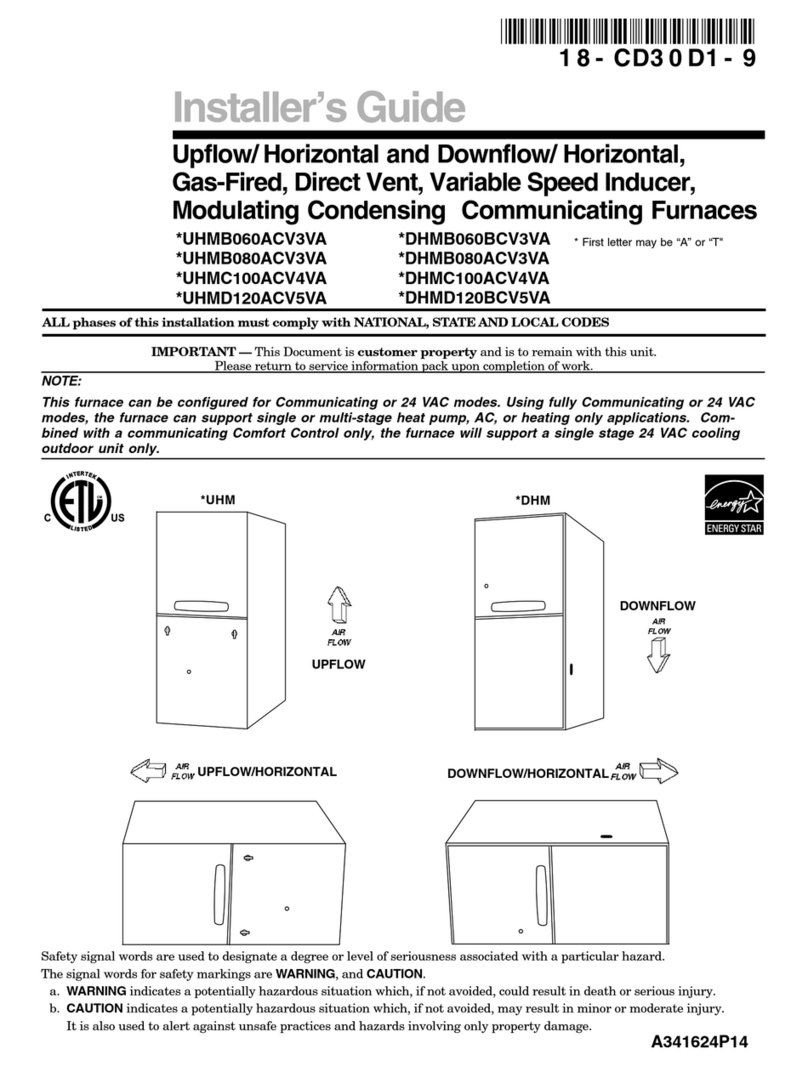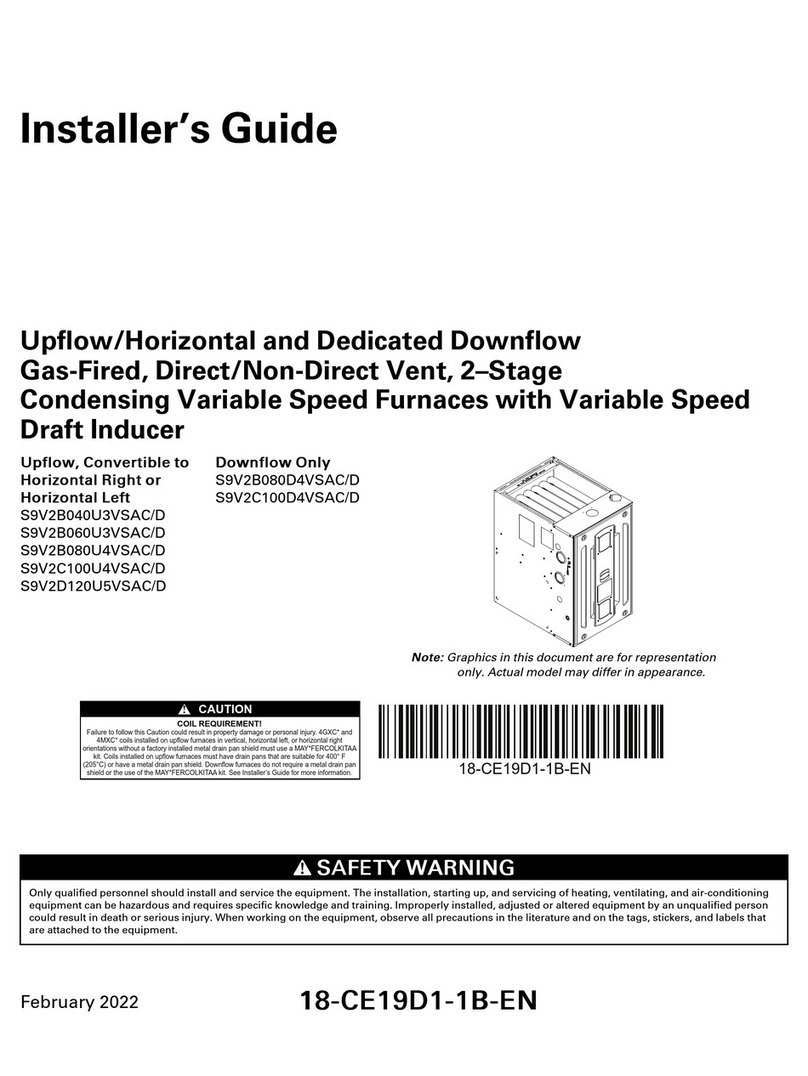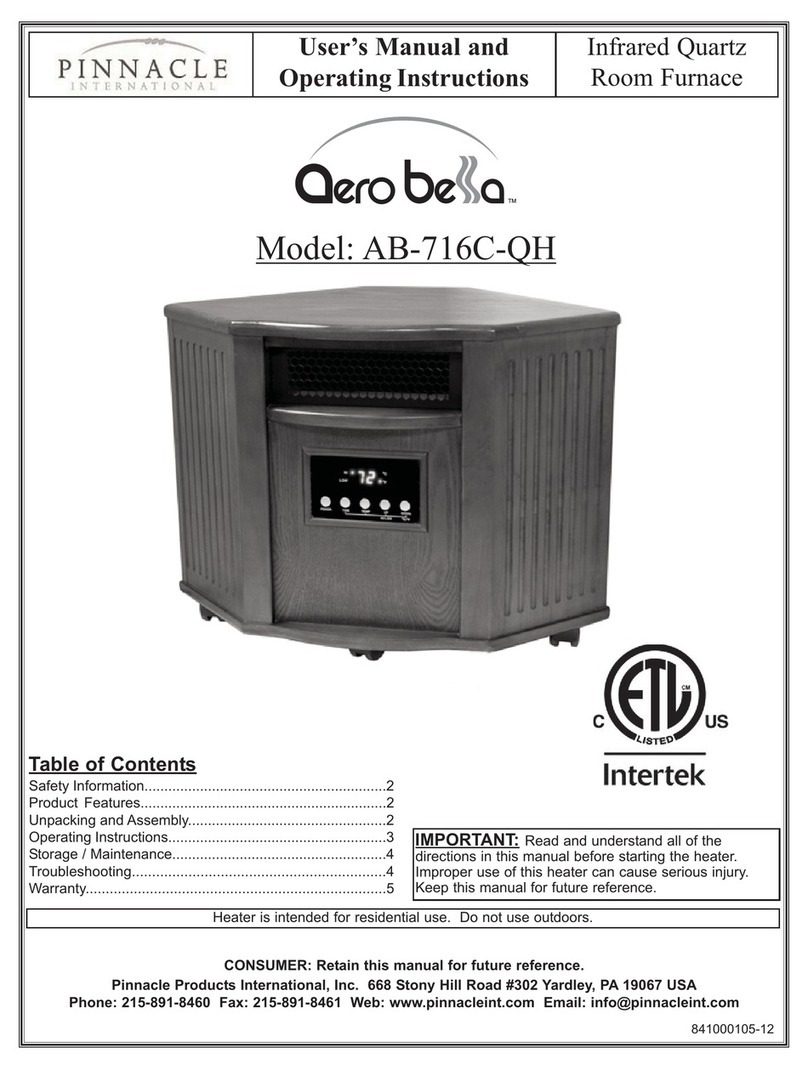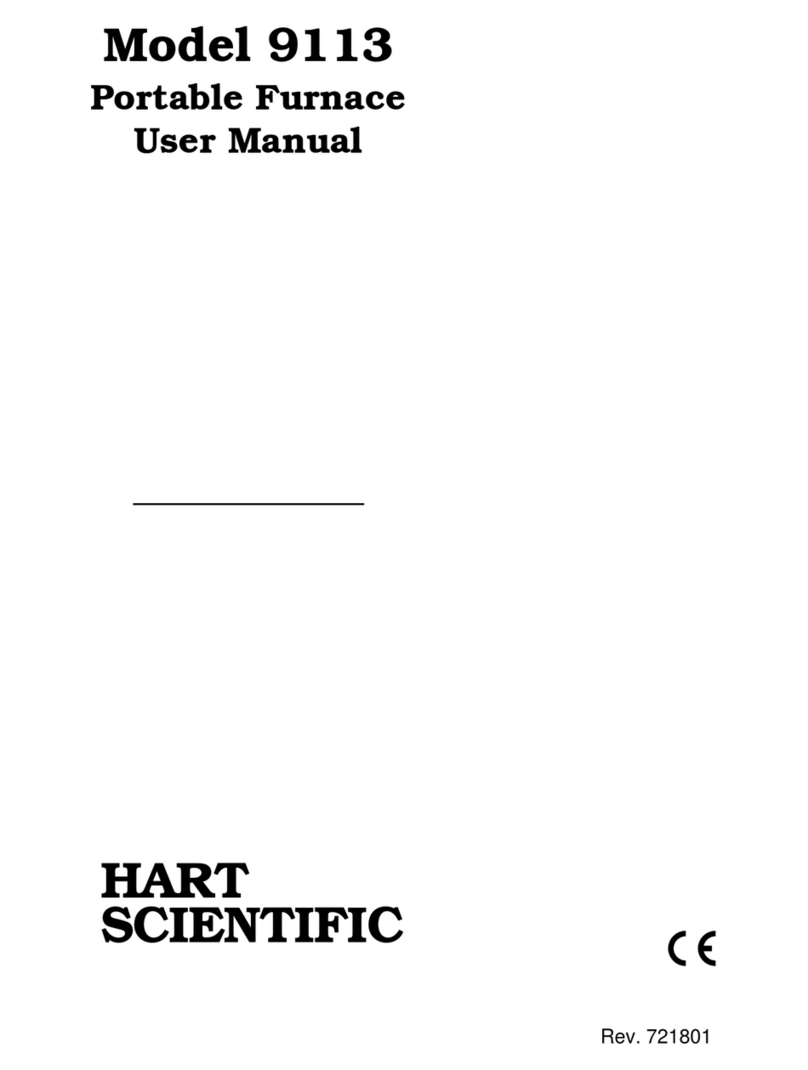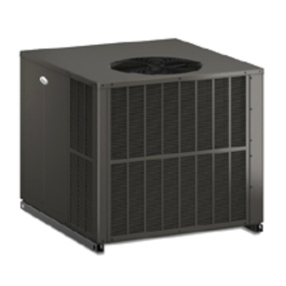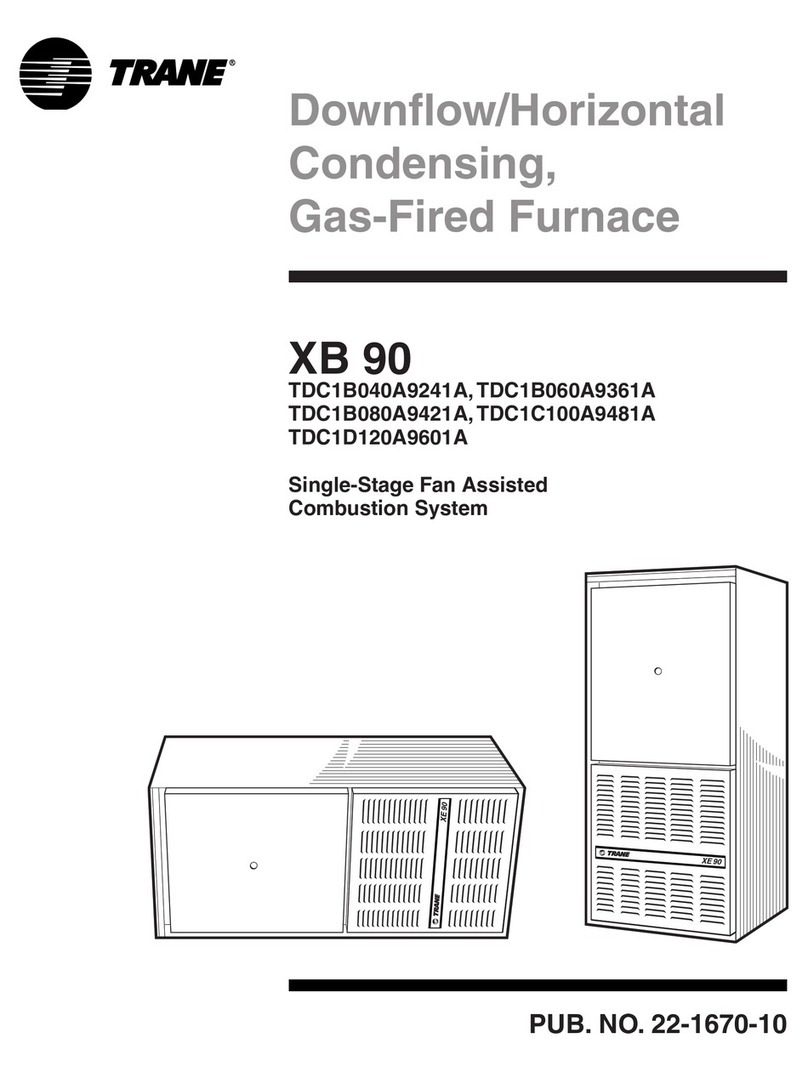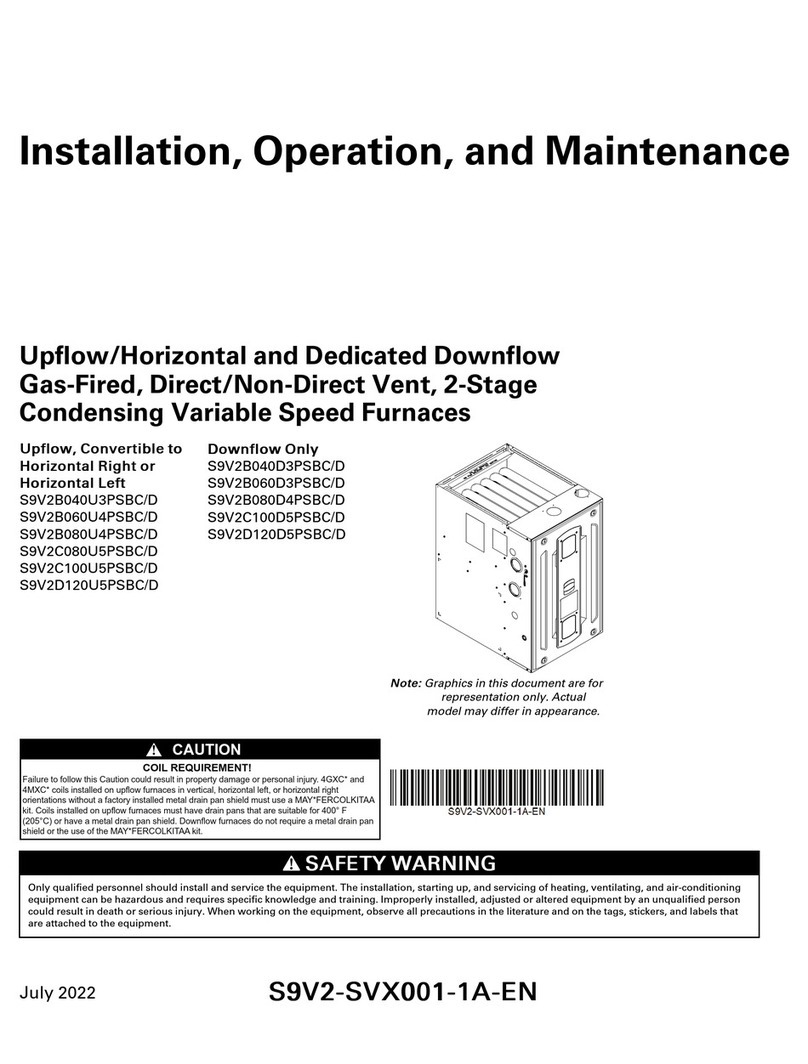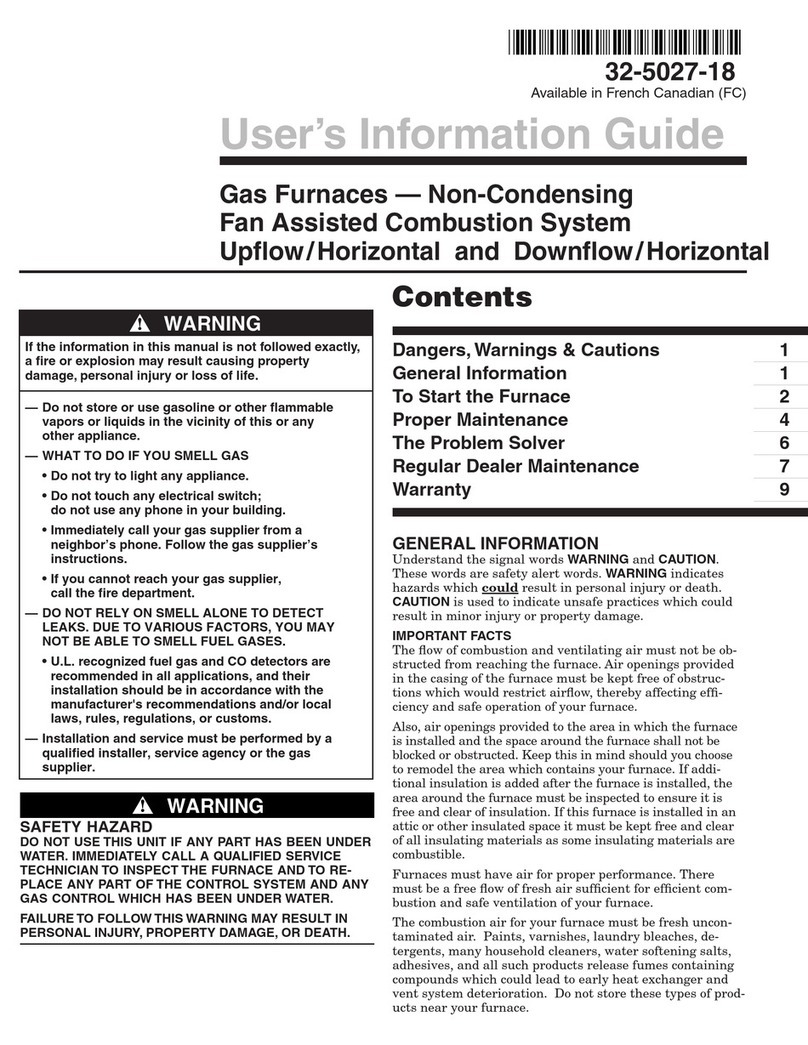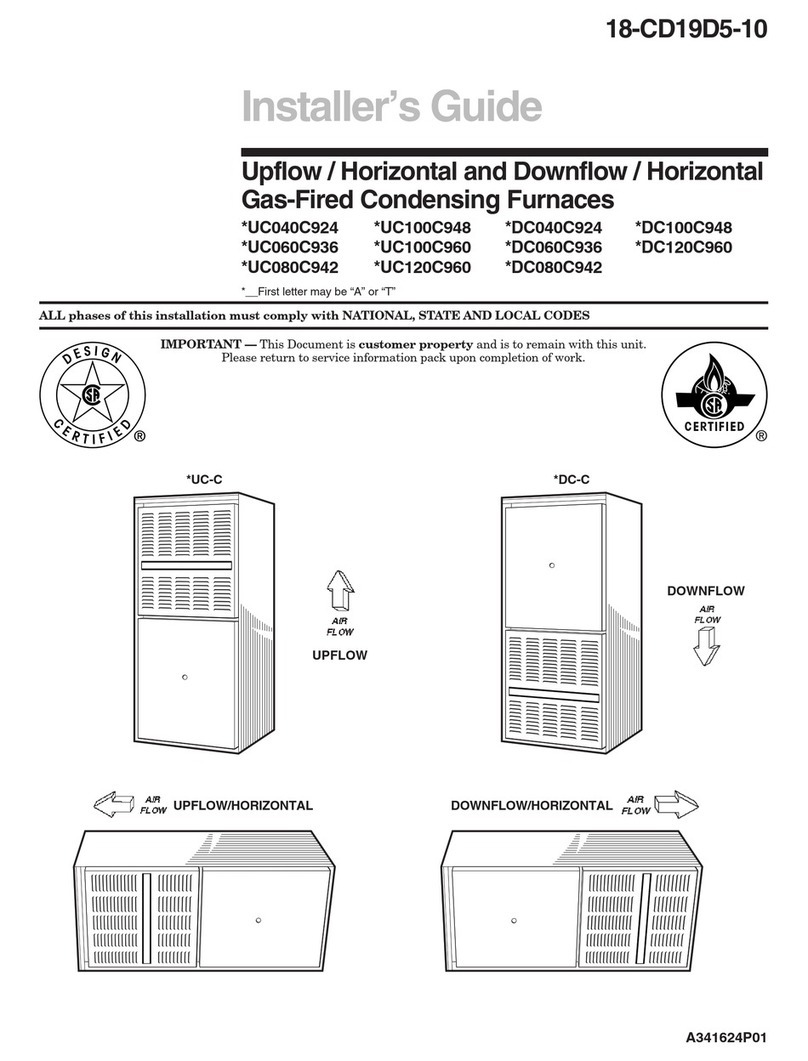
OFF-SF-1B 7
Service Facts
Using a portable light source with a mirror inserted through
and into the heat exchanger, check for an accumulation of soot,
scale, and particulate matter on the walls and in the base of
the drum, or on the floor of the combustion chamber. If a
significant accumulation is present, it should be removed.
Use a flexible wire brush to loosen the deposits on the heat
exchanger walls. Remove any loose foreign material using a
vacuum cleaner. Replace all gaskets, if removed, with new
(unused) gaskets. Reassemble the burner mounting plate,
burner flange, and new gaskets in the reverse order they were
removed. A rubber mallet, or equivalent tool, may be useful
for reinstalling the caps in the cleanout tubes.
WARNING
!
RE-INSTALL ALL PARTS
Should the unit be disassembled, all components, panels,
block offs, collars, gaskets and fasteners must be
reassembled as originally factory produced.
Failure to do so may result in property damage, injury, or
loss of life!
Flue and Chimney
At least once a year, thoroughly inspect the heat exchanger
flue pipe, the vent connector, the chimney, or vent, and the
barometric damper for signs of sagging, loose connections,
excessive corrosion, and deterioration. Clean, repair, or
replace any components for continued safe and proper
operation of the furnace.
INITIAL OPERATION OF THE FURNACE
INITIAL BURNER OPERATION
WARNING
!
EXPLOSION HAZARD
To avoid possible explosion, DO NOT attempt to light the
burner if:
- Oil has accumulated in the base of the combustion
chamber.
- The furnace is full of fuel vapors.
- The combustion chamber is very hot.
CAUTION
!
The
SERVICE INSTRUCTIONS
The oil burner must be installed and adjusted using recently
(within the last year) calibrated combustion instruments by
a qualified heating dealer prior to placing the furnace in
operation. Refer to this manual and the oil burner instruction
manual for details.
CAUTION
!
MINIMIZE OIL ODOR
To minimize initial fuel oil and combustion odors, ventilate
the building well while operating the furnace for the first
time.
Do NOT run the oil pump dry (without oil) for more than two
(2) minutes. Damage to the oil pump may result.
To initially operate the furnace:
1) Turn the electrical disconnecting switch to the “OFF”
position.
2) Set the room Comfort Control above room temperature.
3) Be sure the oil tank is full of clean # 2 fuel oil.
4) Open all shutoff valves in the oil line.
5) Turn on the electrical disconnecting switch and prime the
burner oil pump according to the pump manufacturer’s
instructions.
6) When ignition is established, make a temporary air
adjustment for a clean, smoke-free flame. At this point,
the final burner adjustment should be made using test
instruments to measure oil pump pressure, smoke
number, carbon dioxide (CO2), carbon monoxide (CO),
draft, and flue gas temperature.
- Refer to item (4) under the Troubleshooting section
of this manual for a list of required test instru
ments.
In order to achieve the best combustion efficiency, the
following procedure is recommended.
7) Measure the oil pump pressure. If required, adjust it to
deliver the appropriate pressure for the burner. The oil
pump should be set to produce 130 PSIG, for the R.W.
Beckett model AF burner.
8) Carbon Dioxide (CO2) and Carbon Monoxide (CO) – In
order to assure that proper and safe combustion is taking
place, carbon dioxide and carbon monoxide measure-
ments must be taken. A CO2reading within the limits of
Table 1 with no measurable CO is desirable. The maxi-
mum acceptable CO reading is about 50 PPM. If the CO
reading is too high, open the burner air shutter, or air
band, slightly to permit more combustion air to the
flame. Recheck the CO level and adjust as required.
9) Draft – Draft measurements should be taken through the
overfire port and in the vent connector, not more than 12
inches away from the furnace outlet. A 5/16 in. hex
washer head bolt plugs the overfire port in the burner
mounting plate. Remove the bolt and insert a suitable
draft measurement gage. After the chimney (or stack gas
passageway) has warmed up to operating temperature,
approximately 15 to 20 minutes of burner operation,
adjust the barometric damper to obtain the correct
overfire draft reading. The overfire draft should read
0.02 in. W.G. The draft measured at the flue (stack draft)
should read no more than 0.05 in. W.G.
NOTICE: The overfire draft is the more important measure-
ment and should be used to adjust the setting of the baro-
metric draft control.
10) Flue Gas Temperature – The flue gas temperature will
vary depending on heat input rate, air temperature rise
across the heat exchanger, and air flowrate through the
furnace. To prevent excessive water vapor condensation
from the flue gases, the gross flue gas temperature
should not fall below 330ºF. In addition, if the gross flue
gas temperature exceeds 650ºF, the heating efficiency of
the furnace will be reduced.
To reduce high flue temperatures, after properly adjust-
ing the burner, check for blocked supply/return airflow.
Remove any blockages, increase fan speed, or consider
reducing the furnace heat input rate. Also, verify there is
no air leakage into the combustion chamber from around
the burner mounting flange or heat exchanger mounting
plate. If flue gas temperatures are too low, consider
increasing the heat input rate or reducing the amount of
supply/return airflow.
11) Cycle the furnace several times to verify the burner
lights off and shutsdown smoothly without excessive
noise or smoke production.
